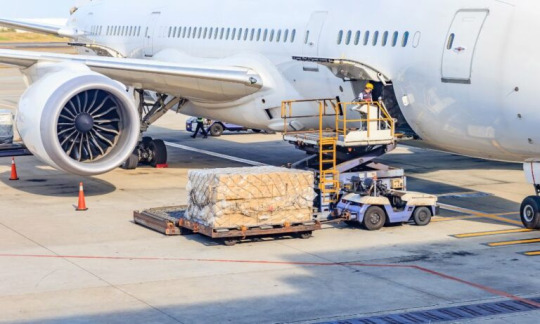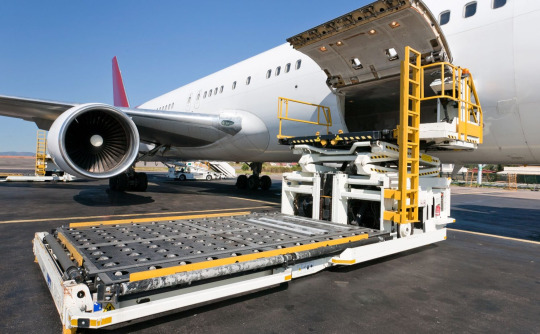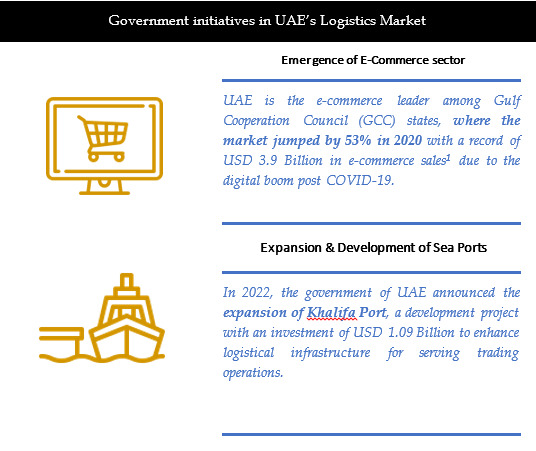#major players in cargo market
Explore tagged Tumblr posts
Text
Air Cargo Market Size, Share, Revenue & Industry Report 2030
Air Cargo Market Overview
The air cargo industry is anticipated to reach USD 130.19 billion by 2030, growing at a CAGR of 4.9% from 2024 to 2030. This sector is undergoing significant transformations, particularly with the adoption of advanced technologies like robotics, artificial intelligence (AI), Big Data, and the Internet of Things (IoT). These innovations are enhancing efficiency across various operations, from flight operations to revenue accounting and network planning.
Market Dynamics
Drivers:
E-commerce Growth: The surge in e-commerce, especially from regions like East Asia, is a primary driver. Airlines report that e-commerce now contributes over half of their revenue from this region.
Technological Advancements: The adoption of robotics, AI, and IoT in air cargo operations is streamlining processes and improving efficiency.
High-Value Shipments: Increasing transportation of high-value items like electronics, pharmaceuticals, and perishables is boosting market growth.

Restraints:
High Costs: The significant costs associated with air cargo services, including high crude oil prices, can hinder market growth.
Infrastructure Needs: Effective air cargo services require substantial infrastructure investments, which can be a barrier for some regions.
Technological Impact: The air cargo sector is increasingly leveraging advanced technologies. For instance, 68% of biotech products are temperature-sensitive, necessitating sophisticated cool-chain technologies. Companies like Pelican BioThermal are at the forefront, providing innovative cold-chain solutions essential for the biopharmaceutical sector.
Market Segmentation
By Type:
Airmail
Air Freight: Dominates the market due to its extensive use for high-value and time-sensitive shipments.
By Service:
Normal Service
Express Service: Holds a significant market share, driven by the need for quick delivery times in the e-commerce sector.
By Destination:
International Market
Domestic Market: The domestic segment led the market in 2018 and continues to be crucial due to rising internal trade activities.
By End-User:
Automotive
Consumer Electronics
Pharmaceutical and Healthcare: This sector holds the largest share due to the critical nature of timely and safe delivery.
Food and Beverages
Retail
Regional Analysis
Asia-Pacific: The fastest-growing region, driven by booming e-commerce in China, India, and Australia.
North America: The second-largest market, supported by advanced infrastructure and major industry players.
Europe: Holds a significant share due to well-established logistics networks and technological advancements.
Latin America and the Middle East & Africa: These regions have the least market share, constrained by inadequate infrastructure and lower disposable incomes.

Major Players in the Air Cargo Market
Qatar Airways (Qatar)
Etihad Airways (UAE)
International Consolidated Airlines Group, SA (UK)
All Nippon Airways Co., Ltd (Japan)
Deutsche Lufthansa AG (Germany)
Japan Airlines (Japan)
The Emirates Group (UAE)
Singapore Airlines (Singapore)
Cargolux (Luxembourg)
Korean Air (South Korea)
China Eastern Airlines Corporation Limited (China)
Cathay Pacific Airways Limited (Hong Kong)
DHL International GmbH (Germany)
United Parcel Service of America, Inc. (US)
FedEx (US)
Recent Developments
February 2022: AP Moller-Maersk acquired Pilot Freight Services for USD 1.6 billion, enhancing their air freight capabilities.
February 2022: Flexport placed an advanced purchase order for Natilus's cargo UAVs, highlighting a shift towards autonomous air freight technology.
Conclusion
The air cargo market is poised for significant growth, driven by technological advancements, the rise of e-commerce, and the increasing demand for quick, efficient delivery of high-value goods. Despite challenges like high costs and infrastructure needs, the sector is set to expand, with major players continuously innovating to meet global demands.
#cargo industry research reports#cargo market research reports#cargo sector research reports#cargo market#cargo market segmentation#cargo market analysis#major players in cargo market#cargo industry#air cargo market
0 notes
Text
UAE Logistics Market to grow at the rate of 7.5% in the upcoming period between 2021-2026 owing to government initiatives such as Expansion of sea ports alongside technological innovations such as Real-Time Tracking : Ken Research
History of steady growth alongside a positive future forecast provides UAE’s logistics Market increasing confidence & interest of stakeholders, says a report by Ken Research
1. Expansion of existing sea ports, emergence of e-commerce sector coupled with rising maritime, air cargo & land transport sector serves as major catalyst for the growth and development of logistics industry in UAE.

The government of UAE is aiming to establish it as a Logistics Hub by huge investments in the infrastructure. Initiatives such as development of sea ports (USD 1.09 Billion to enhance logistical infrastructure for serving trading operations) alongside a growing pharmaceutical & maritime industry will help UAE government to achieve the economic growth targets by 2040. The country’s strength lies mainly in its maritime sector. As per relevant data, the Bunker Supply Index ranked UAE 3rd globally in transport services and 5th globally as a key competitive maritime hub. As of 2022, there were more than 10 million cubic meters of crude and oil products storage capacity at Fujairah, making Fujairah the world’s No. 3 bunkering hub, which contributes in strengthening UAE’s position as a reliable supplier of crude oil. All in all, the country has a huge potential when it comes to expansion of its logistics sector.
Visit this Link:- Request for custom report
2. “Integrating Technology to market’s growth prospects:” With the increasing technological innovations and advancements across the world, logistics sector in UAE is also getting benefitted.

#Bollore Logistics UAE Annual Revenue#BSD City UAE Market Share#Ceva Logistics UAE Market Revenue#Challenges UAE Logistics Market#Competitors in UAE Logistics Market#Emerging players in UAE Logistics Market#Hellman UAE Market Share#Investment UAE Logistics Market#Leading Players in UAE Freight Forwarding Market#Leading players in UAE Logistics Market#Leading Sensors & Controls Providers UAE#Leading Warehouse Automation Service Providers#LinFox UAE Market Share#Major Identification & Data Capture Service Providers#Major Players in UAE Logistics Market#Mohebi Logistics UAE Market Share#NTDE UAE Market Revenue#Number of Cargo Trucks in UAE#Number of Trucks in UAE#Number of Warehousing Units in UAE#Opportunities UAE Freight Forwarding Market#Rhenus Logistics UAE Market Growth#Toll UAE Market Share#Top Material handling solution providers#Top Players in UAE Logistics Market#UAE Air Freight Market Revenue#UAE Automobile Freight Market#UAE CEP Market#UAE Freight Forwarding Market#UAE Industrial Warehouses Market Share
0 notes
Text
Does Sevika Have What it Takes to Run Zaun?
The power vacuum in Zaun is sure to be a major source of conflict next season. There will be plenty of figures, both known and unknown, that will try to gain control of what's left of Silco's Shimmer empire and thus the center of Zaun's black market. Of all the candidates that could possibly replace Silco, one of the strongest contenders is Silco's right hand, Sevika. Sevika has many of the qualities that make her an excellent candidate to take Silco's place. Sevika is one of few key players that is trusted by the members of Silco's organization, brutally competent at her job, and genuinely believes in Zaun's independence. The real question is, can Sevika handle Silco's mantle?


Sevika has a lot going for her, but just as much against her, and one of her main problems is that she uses Jinx as a crutch for her shortcomings. When the Firelights destroyed the shipment of Shimmer that was supposed to go out on Progress Day, she laid the blame for the operation's failure squarely on Jinx. It's true that Jinx did injure at least one member of her team in friendly fire and failed to protect the cargo, but everyone else failed too, including Sevika. Not only were all of the crew easily ambushed, none of them had any countermeasures for a known enemy. One guy grabbed a harpoon gun and missed miserably with each shot. Jinx herself wouldn't have gotten involved if Sevika and the crew were better able to work proactively, maybe by investing in a net gun.


Worse still, Sevika claimed she could have handled the situation without Jinx, which is practically a lie. Without Jinx, the Shimmer would have been destroyed much faster, there would have been no one to delay the Firelights or take down 5 of the 8 that were present. But Sevika would rather use the situation to cast more focus on Jinx to undermine her position rather than manage the critical failure in defense that the rest of the team demonstrated under pressure. Silco even pointed this out, the audience was just more inclined to see his opinion as biased.
You can't let Jinx be the excuse for why everything goes wrong, all it does is make everyone zero-in on just Jinx's mistakes rather than take a few steps back to examine why things went wrong. If that actually happened, then someone might actually ask, "How did the did the Firelights know there'd be an important shipment going out on Progress Day?". Or "How did they know which ship they'd be using if they obscure any identifying information on the ship manifests?". And more importantly, "Is there a mole?". Instead, you get a team that drinks and parties after a real shitshow because their direct boss confirms that all their problems are just one person.

This all bleeds into another main issue of hers. Every time Sevika's in a confrontation, she thinks like an individual rather than a leader. The first time she fights Vi, she let's two of her underlings runaway rather than help her. When Vi comes back for round 2 with the same special hextech that caused so much mayhem at the Shimmer Refinery, Sevika tells the entire crew there to leave so they can go 1-v-1. Everytime something comes up, Sevika chooses not to delegate work or strategize with others around an obstacle, she'd rather take on the responsibility for problems like this by herself.
You could argue that Sevika was the only one capable of fending off Vi, especially with Sevika's new prosthetic's enhancements. But Sevika left no room for support in the background to at least distract Vi or give Sevika cover. If we go way back to the Cannery, Silco has to hold back Sevika from fighting Vi because he thought it was a better idea to use Deckard than do the same thing over again. And he was right! It was better to throw a Shimmer'ed up Deckard at Vi, and reserve Sevika when everyone else lost to Vi. If he hadn't Sevika wouldn't have saved him from the explosion.

If all this wasn't enough, the way Sevika is portrayed in terms of power, doesn't bode well for her potential as a leader. Plenty have pointed out that smoking is a symbol of power in Zaun, those with even a modicum of power smoke. What isn't always pointed out is how anyone who's interrupted smoking, inevitably loses power.


The first time it happened was with Vander, Marcus snatched his pipe and extinguished Vander's flame in his drink. The next episode Marcus' deal with Silco sealed the end of Vander's regime. A man on a smoke break at Silco's refinery (probably a manager) is immediately held at gunpoint by an enforcer part of the raid, where everyone caught was likely arrested and lost their jobs. Silco never actually lost his cigar, and so when he was killed, it wasn't politically motivated, it was an accident.


Curiously, Sevika and the Enforcers from the Progress Day attack actually smoke the same kind of cigarillos. These enforcers happen to be the only Piltovans we see smoke in the series, maybe because they're lower class or former Zaunites themselves. Unlike all the the other times, no one had to directly force them to stop smoking, Jinx made them drop it by simply terrifying them. And Jinx would go on to kill at least a score of enforcers including the Sheriff. Jinx likely threw the chain of command in disarray, doubly so if she killed at least 5 councilmen who the Sheriff would report to.


It makes for an interesting parallel when Vi first attacks Sevika and knocks out her symbol of power. In that scene Sevika managed to win her card game with Trump cards that heavily resembles Jinx and Viktor, but even when she wins, she still loses her cigarillo. All Vi needed to do was catch Sevika off guard and apply force, the same as the other enforcers (and even the Firelights). Later she'll let Finn light up her cigarillo while he affirms her strengths in Zaun.



By the finale, we see her after she's been beaten by Vi, Sevika chooses to go to Silco's office to smoke one of Silco's cigars while he'sgone, but she can't light it on her own. While this might foreshadow that she'll try to take Silco's place, Sevika struggles to light the cigar because if you notice in her hand is a lighter with a fancy "F" on it, Sevika's using Finn's lighter. Silco, Vander, and Finn all had their own matches and lighters. To light Silco's cigar, Sevika uses means by which she took from Finn, a man she just killed for an ill planned selfish gambit for power.



This alone wouldn't look too bad, because as I see it, in Zaun, it's not the act of smoking but the imagery of smoke itself that's associated with power, and you don't need to smoke to have smoke. Look at Jinx and Vi, both command considerable influence on the ongoing developments between the two cities and align with strong figures. Neither of the two smoke, instead they cover themselves in smokelike tattoos, Jinx's tattoos literally resembles the blue smoke of her first succesful bomb. In contrast to their predecessors both manage to embody their power more wholly onto their person in a way that's less vulnerable than the smoking tradition to usurpation. Sevika herself also wears smoke like patterns on her collar, which are less prominent or permanent than Jinx and Vi's tattoos.
Each issue alone is cause for concern in the viability of Sevika's potential leadership role, but altogether they create a solid line of doubt for if she can pull it off. To make it work she needs to shape up Silco's former crew because she can't be the only one pulling any weight. They're all going to face a conflict that will only grow more complex, demanding, and fast changing as time goes on. A situation like that prior to Jinx's rocket would have easily have incapacitated them, now it's all going to happen on a larger scale. Sevika needs to recognize what went right and wrong for Silco, Vander, and Finn.
Tldr: The chance for Sevika to be Zaun's new leader will be an uphill climb for her for sure. Her biggest problems is that she takes the lead rather than utilizing the team, she gets easily caught off guard, and Jinx can put blinders on her perspective. She's kind of like an older more seasoned Vi that never gave up on Zaun's independence warts and all.
#arcane#sevika arcane#silco#jinx arcane#arcane meta#arcane speculation#arcane season 2 speculation#i feel like if Silco saw a play by play of what went down on the ship he might actually be relieved#in a “my imagination made it worse way” and he'd feel more free to go wtf at everybody else's game in the first half#vi arcane#vander arcane#some people work better as kingmakers#also i think that the push for sevika to lead is more about lining up competent ducks in a row rather than her in a good fit
163 notes
·
View notes
Text
February 2024 Important Dates

AKA my notes on The Astrology Podcast's February forecast.
January recap: With Pluto now in Aquarius we've got new technological developments: "flying taxis" going to market, Google's new AI set to release around Jupiter in Gemini, and the first commercially available see-through LED screens. In Saturn-Neptune news, Apple's new VR operating system is being advertised as "spatial computing." Aquarius loves to experiment for the joy of discovery--even if society ends up rejecting some of these new projects. Austin points out many prophetic "near future" fiction stories came out under Jupiter-Saturn in Libra in the 1980s, which was a preview of those conjunctions occurring in air signs for the next 200 years (we had the last earth ones a few years ago). Saturn-Neptune also connotes widespread political misinformation (as it did in 2016)--we've got AI deepfake videos of political figures being used not just for humor, but also to try and sway voters in the New Hampshire Primary. Another notable Saturn in Pisces story is the restriction of the Red Sea trade route and subsequent rerouting of cargo ships along global trade routes. The Mars-Saturn conjunction in Pisces in March will likely show major developments in maritime combat or disasters.
We enter the month fresh off Pluto's ingress into Aquarius. There's a lot of energy in the sign this month, some good and some difficult. The faster-moving planets will be joining Pluto in Aquarius specifically for the first time since the 18th century, giving us the first tastes of what the next 20 years will bring for society at large. For personal charts, what house does Aquarius fall in?
February 5th - Mercury enters Aquarius, conjoins Pluto This is the first planet to join the Sun and Pluto in Aquarius. Venus and Mars will follow this ingress-conjunction pattern later this month--and the new Moon is in Aquarius. Mercury-Pluto brings up information and power such as classified document leaks, as well as hidden pathways or getting lost in the labyrinth. Determined efforts to delve into deeper truths can pay off, but we can also become obsessed with something no one else can see. Other significations include taboo subjects, with science and social rules being especially important in Aquarius, and negating ideas we once thought were true. Paranoia and manipulations also abound with Pluto-Mercury. In Aquarius we'll see these issues take light especially through new technologies. In general Pluto magnifies small things to their biggest extremes--something microscopic may change society irrevocably, etc. The PRC has a timed chart with Aquarius rising with the Moon in Aquarius, and indeed has been leading the world in uses & development of certain new technologies, which in turn has brought power struggles with other major players in those fields.
February 6th - Fortunate date (not pictured)

Set at about 8:00AM local time, this chart should give you 11° Pisces rising. The Ascendant ruler Jupiter is in the 3rd house in a day chart, emphasizing communication and other 3rd house topics. The Moon in early Capricorn applies to a trine with Jupiter, bonifying her. The Jupiter-Saturn sextile is emphasized here; while Saturn is very close to the Ascendant, he's more cooperative in a day chart, and is being received by Jupiter (is in Jupiter's sign), who he's trining. Thus Chris predicts it'll be a good balance of consolidation and growth. This does have Mars in the 11th house in a day chart, so it's not great for matters involving friends, groups, and alliances. But it is good for communicating, neighborhood, education/learning, weekly schedule, siblings, and starting a daily practice (Saturn will help us establish routines).
February 9th - Aquarius New Moon

At 20° of Aquarius, the closest configuration is a square from Uranus (19♉), connoting a disruptive or unexpected component. This is also the first Aquarius New Moon with Pluto present--Pluto will be weighing in on all monthly meetings in Aquarius for now. We can expect concerns around independence and freedom, but also emotional volatility. "How do I break from this pattern?" asks the rebel, knowing it'll be better than keeping things as they are. Mercury also applies to a square with a Jupiter during this time, expanding communications & bringing (possibly excessive) optimism. The Jupiter-Saturn sextile that hung over much of January weighs in as well, balancing our drives for both growth and consolidation.
February - 12th/13th Mars enters Aquarius Soon after he conjoins Pluto.
February 14th - Mars conjunct Pluto This is the first hard aspect since the square circa October 7th. There are going to be about 10 of these conjunctions during Pluto's trip through Aquarius. Mars connotes military operations, while Pluto brings underground groups and struggles. We've been having power dynamics stirred up in the Capricorn parts of our charts the past 20 years, and now this moves to our Aquarius house/area of life. Possessiveness and excessive force are also connoted by this planetary combination; exercise caution and take special care not to go too far. Austin describes this feeling as a "struggle against annihilation," even when we're not actually fighting for our lives. It'll take self-control and grace to navigate this Valentine's day well.
February 16th - Venus enters Aquarius Soon after she will conjoin Pluto, and later Mars.
February 17th - Venus conjunct Pluto The intensity, obsessions, and making mountains of molehills brought up by other planets' Pluto contacts will now show itself in the realm of relationships and social interactions. We get the extremes of affection and its negation with Venus-Pluto. This can be a good time for experimenting in the arts: we're getting a new movie based off Frankenstein, which was published under Pluto in Aquarius. Much of the novel is from the perspective of no the doctor but his experiment--when are we our own lab rats?
February 18th - Sun enters Pisces
February 22nd - Venus conjunct Mars Unfortunately Mars, Aquarius, and Pluto do not bode well for Valentine's-adjacent activities. Some positive connotations include magnetic allure and deep, passionate connections with others, extreme vulnerability and devotion. However, keep watchful for power struggles and manipulation in relationships and attraction. Ask yourself, "is this healthy or is this too far?" and try to set healthy boundaries. (Though the answers may be clearer in hindsight.) Look out for hastiness in relationships, jealous and aggression in love, or attraction to drama or conflict. Try to balance passion with reason, communicate clearly, and express that energy through creative outlets.
February 23rd - Mercury enters Pisces
February 24th - Virgo Full Moon

Immediately after its exact opposition to Saturn, the Moon applies to one with Saturn, who as a matter of course is also applying to Saturn by conjunction (pictured above is the Moon between these oppositions). Austin describes this as a magnified check-in with Saturn, as we're approaching the 1-year mark for Saturn in Pisces (early March). How have you been bearing having to swim with weights on? Or maybe you've hooked something powerful on your fishing line--how will you reel it in? Chris says this lunation highlights tension in the Virgo part of our charts as well, shedding light that may help us identify solutions. We have a Sun-Mercury-Saturn conjunction a few days later that will bring our attention back to Pisces.
February 26th/27th - Mars square Jupiter Jupiter wants to help, but something's getting in his way. We can also think about taking risks, leaving our comfort zone, and increased energy/enthusiasm. However, as Mars is overcoming Jupiter (earlier in the zodiac), traditional sources would indicate that the warlike side of things will gain the upper hand over peaceful Jupiter. Mars in Aquarius connotes rogue or outsider forces, while Jupiter is privileged by stability in Taurus. Keep a lookout for global trade points and major conflicts, which will likely see developments around this time. Some positives of Mars-Jupiter include increased motivation, taking bold actions, and meeting ambitious goals. On the flipside is impulsiveness, overconfidence, and recklessness. Mars-Jupiter is willing to take a risk. Sometimes, it's better not to know exactly what you're getting into so you don't get overwhelmed by a monumental task; other times, it doesn't work out. This is the placement of the intrepid explorer.
February 28th - Moon, Mercury, and Saturn conjunction in Pisces This occurs at 9 degrees of Pisces, and each planet applies to a sextile with Pisces in the following days. Jupiter brings us another management check-in after Saturn's: how have we been balancing growth with consolidation? Jupiter's going to pick up speed and zoom out of Taurus later this year, moving away from this balanced position to a difficult square with Saturn. We've been balancing weight with buoyancy, but once in Gemini Jupiter forms more of helicopter to Saturn's submarine--vehicles that can't be combined. With Saturn and Mercury (and the Sun shedding light), we'll likely see changes in the status of maritime trade and travel. From Saturn to Jupiter we may see something go from being stuck to unstuck.
As we wrap up the month, we've got some Pisces planets approaching Neptune while Jupiter approaches Uranus. And don't forget, we've got 29 days in February this year!
#transits#forecast#february 2024#mundane astrology#the astrology podcast#pluto in aquarius#mercury conjunct pluto#mars conjunct pluto#venus conjunct pluto#venus conjunct mars#saturn in pisces
19 notes
·
View notes
Text
Rajasthan Export Promotions 2024: A Visionary Initiative by Col Rajyavardhan Rathore

Rajasthan, a state known for its rich heritage, craftsmanship, and industrial potential, is poised to become a major player in global trade with the introduction of the Rajasthan Export Promotions 2024 policy. Spearheaded by Col Rajyavardhan Rathore, this initiative aims to boost the state’s exports, empower local artisans, and attract foreign investments.
In this article, we explore the highlights, objectives, and potential impact of this policy on Rajasthan’s economy and its global standing.
Why Rajasthan Needs an Export Promotion Policy
Rajasthan has long been a hub of unique goods such as handcrafted textiles, gems, jewelry, and agricultural products. However, the state’s export potential has often been underutilized due to logistical challenges, lack of infrastructure, and limited global outreach.
The Export Promotions 2024 policy addresses these gaps and sets a roadmap for Rajasthan to become a competitive exporter on the global stage.
Col Rajyavardhan Rathore’s Leadership in Export Growth
As a leader with a vision for Rajasthan’s economic prosperity, Col Rathore emphasized: “This policy is not just about boosting exports; it’s about uplifting our artisans, industrialists, and farmers while placing Rajasthan firmly on the global trade map.”
Key Objectives of Rajasthan Export Promotions 2024
Increase Export Revenue: Achieve a significant rise in Rajasthan’s export contributions to India’s GDP.
Diversify Export Categories: Expand beyond traditional sectors to include IT, renewable energy equipment, and processed food.
Empower Local Businesses: Provide small and medium enterprises (SMEs) with access to international markets.
Sustainability: Promote eco-friendly products and sustainable practices in exports.
Highlights of the Export Promotions 2024 Policy
1. Infrastructure Development
Export Hubs: Establishment of dedicated export hubs in Jaipur, Jodhpur, and Udaipur.
Logistics Support: Improved connectivity through highways, railways, and air cargo facilities.
Special Economic Zones (SEZs): Expansion of SEZs for industries like textiles, gems, and ceramics.
2. Financial Support
Export Subsidies: Incentives for exporters, including subsidies on freight charges.
Credit Facilities: Low-interest loans and credit schemes for MSMEs.
Tax Benefits: Exemptions on specific export-oriented services and products.
3. Digitalization and E-commerce
Online Export Platforms: Launch of a state-specific portal for exporters to showcase and sell their products globally.
E-Commerce Training: Workshops for businesses to leverage global e-commerce giants like Amazon and Alibaba.
4. Skill Development and Awareness
Training Programs: Upskilling artisans and entrepreneurs in global market trends.
Export Awareness Drives: Seminars and expos to connect businesses with international buyers.
5. Focus on Key Export Sectors
Handicrafts and Textiles: Reviving traditional crafts for global appeal.
Gems and Jewelry: Strengthening Rajasthan’s leadership in the global gemstone trade.
Agriculture and Food Processing: Exporting organic and processed food products.
Renewable Energy Equipment: Leveraging Rajasthan’s solar energy expertise.
Impact of the Policy on Rajasthan
Economic Growth
An anticipated 25% increase in export revenues by 2026.
Boost in employment opportunities in export-centric industries.
Empowerment of Artisans and MSMEs
Enhanced income for local artisans, weavers, and entrepreneurs.
Global recognition for Rajasthan’s traditional and modern industries.
Global Standing
Positioning Rajasthan as a preferred destination for international buyers and investors.
Strengthening Rajasthan’s brand as a hub of quality and innovation.
Col Rajyavardhan Rathore’s Vision for the Future
Col Rathore envisions Rajasthan as a global export leader that balances tradition with innovation. In his words: “This policy is a blend of Rajasthan’s cultural roots and modern aspirations. It’s about creating a thriving economy while preserving our heritage.”
The Road Ahead
The Rajasthan Export Promotions 2024 policy sets the stage for the state’s transformation into an export powerhouse. By focusing on infrastructure, technology, and talent, this initiative will create a sustainable, globally competitive ecosystem.
Conclusion
Rajasthan Export Promotions 2024 is more than just a policy — it’s a commitment to progress and prosperity. Under Col Rajyavardhan Rathore’s visionary leadership, Rajasthan is poised to make its mark on the world stage while empowering its people and industries.
2 notes
·
View notes
Note
Shoyo-Bestgirl Feng
Autistic, Gremlin, Excited
Air (Void?)
Cold
Clean (More a constrained chaos)
High-Tech
Hard
Noble (but a scamp)
Violent but probably lack of context for otherwise
Unsure? Government or Corporate maybe?
Augmented (Genetic Enhancements)
Military Officer, Professional Go Player, Wildlife Caretaker
Swords and they're the sharpest ever, Is nonverbal so probably communicates in an alternative fashion to others from her mech
[ For I'll write an Armored Core VI Verse/AU for your muse ]
World: Uranus (Sol 7) Catalog Number: n/a Type: ice giant, various colonies Climate: artificial, temperate Population: 12 million Satellites: 27 Notable Features: orbital ring and dockyards
Helium-3, the lifeblood of the interstellar economy, is not an easy thing to acquire at industrial scales. Lunar deposits were costly to extract and rapidly overexploited to fuel human industry. While insatiable demand drove the early development of the Jupiter colonies, Jupiter's deep gravity well, intense radiation belts, and differentiated atmosphere made atmospheric mining at scale prohibitively costly. Saturn was ultimately little better, and the market was primed for a cheaper supply. Uranus, with a much weaker gravity well and more importantly still an unsettled distribution of helium, was exactly what humanity needed, despite being located at a markedly greater distance. The ease of extracting power from its magnetic field, which is tilted from the rotation of the planet, was another plus.
Today, Uranus hosts a largely automated helium-3 extraction industry, providing the bulk of the supply in Sol and neighboring systems. Atmospheric mining is conducted via massive atmospheric platforms—part aerostat, part aircraft—which routinely transfer their haul to low orbit via cargo drones. These are subsequently collected by skyhooks descending from the orbital ring. This ring, having been constructed through extensive mining of the Uranian moons, hosts most of the human population, and sustains itself using volatiles from the planet and ices from said moons. While the orbital ring is under the tight control of a unified governing authority practicing dirigiste economic policies, the resulting "national champion" corporations promote the interests of Uranus vigorously, not just in the remaining early colonies of closed O'Neill cylinders around the planet, or on its moons, but throughout the outer Solar System—much to the chagrin of the Jupiter colonies.
Name: Shoyo Fēng Augmentation: Generation Nine Occupation: corporate security officer Affiliation: Fēng Tactical Solutions Registration Number: Sl4649 Callsign: Tacit Armored Core: Intervals
Although most of the Uranian corporations have their own internal security details, external physical security is almost inevitably contracted to Fēng Tactical Solutions, which de facto constitutes the Uranian military and is publicly traded but majority-controlled by its namesake family. Given their limited recruitment pool and the need to function across a wide range of environments (so-called ECOAS operations—earth, colony, asteroid), the company places a particular emphasis on skill and first strike capability to minimize losses. Their defensive forces are limited and their offensive forces are organized into role-specific strike teams.
The newest member of the Fēng family to appear in the corporation's combat roster, Shoyo was initially assigned to a Muscle Tracer guard unit, but proved to be a poor fit for the duty assignment despite her stellar simulation scores. It was eventually judged that her talents were being wasted, and she was reassigned to an Armored Core-based reconnaissance and scouting team. The unit in question routinely dispatches its members solo and notably farther afield than the usual stalking grounds of the outer Solar System, to include other systems.
While Shoyo's unusual text-and-gesture-only style of communication proved a hindrance in team formations, the cryptic impression it leaves has proven oddly fitting to her new line of work.

A fairly high-tech AC, Intervals was—perhaps somewhat paradoxically to those from more terrestrial backgrounds—constructed with melee combat in mind. Relatively nimble while retaining good armor and defense, it features higher stability for its weight.
Functionally a light assault unit, its typical combat pattern is closing with assault boost while using vertical plasma missiles to suppress targets, then continuing to apply pressure with its machine gun as it closes to melee range. The laser blade provides excellent mobility in this regime and can sweep multiple targets, while its laser slicer and assault armor make for devastating follow-ups. A nightmare once it's within enemy ranks, it also poses a substantial threat to any AC that would underestimate its close-range power.
#Out Of Character#maddmuses#Armored Core RP#Armored Core Roleplay#Long Post#Asks#Ask Games#[ Uranus is basically Space Norway ]
2 notes
·
View notes
Text
Logistics and shipping in the United Arab Emirates (UAE)
Logistics and shipping in the United Arab Emirates (UAE) have undergone significant transformations over the past few decades, driven by the country's strategic location as a global transportation hub, booming trade volumes, and investments in infrastructure development. The UAE's logistics and shipping sectors have played a vital role in supporting the country's economic growth, facilitating international trade, and enhancing its competitiveness in the global market. In this article, we will explore the evolution, challenges, and future prospects of logistics and shipping in the UAE.
Evolution of Logistics and Shipping in the UAE:
The UAE has a long history of involvement in maritime trade, with the ports of Dubai and Abu Dhabi serving as key trading centers for centuries. However, it was only in the 1970s that the country began to emerge as a major player in global trade, fueled by the discovery of oil reserves and the development of its infrastructure.
The first modern container terminal in the UAE was established in Dubai in 1972, marking a major milestone in the country's logistics and shipping sector. The UAE's strategic location between Europe, Asia, and Africa, along with its modern infrastructure, has made it an ideal hub for regional and global trade.
Over the past few decades, the UAE has continued to invest heavily in its logistics and shipping infrastructure, transforming itself into a world-class transportation and logistics hub. The country's major ports, including Jebel Ali Port in Dubai and Khalifa Port in Abu Dhabi, have become some of the busiest and most advanced ports in the world, handling millions of TEUs (twenty-foot equivalent units) of cargo every year.
In addition to ports, the UAE has also invested in modern airports and extensive road networks, connecting the country to major markets in the Middle East, Asia, and Europe. The Dubai International Airport, for instance, is one of the busiest airports in the world, serving as a major air cargo hub and handling millions of passengers and cargo every year.
Challenges Facing the UAE's Logistics and Shipping Sector:
Despite the impressive growth of the UAE's logistics and shipping sector, it still faces several challenges that need to be addressed. These challenges include:
Competition from neighboring countries: The UAE faces stiff competition from other countries in the region, such as Saudi Arabia, Oman, and Qatar, which are also investing heavily in their logistics and transportation infrastructure. This competition puts pressure on the UAE to continually improve and innovate in order to maintain its competitive edge.
Infrastructure constraints: The UAE's logistics and shipping sector faces several infrastructure constraints, such as limited land availability and congested roads. These constraints can lead to delays and higher transportation costs, affecting the sector's overall competitiveness.
Dependence on oil revenue: The UAE's economy is heavily dependent on oil revenue, which can be volatile and subject to fluctuations in global oil prices. This dependence makes it important for the country to diversify its economy and focus on non-oil sectors, such as logistics and shipping.
Future Prospects of Logistics and Shipping in the UAE:
Despite these challenges, the future prospects for the UAE's logistics and shipping sector are bright. The country has taken several steps to address the challenges facing the sector and to position itself as a leading logistics and transportation hub in the region. Some of these steps include:
Infrastructure development: The UAE continues to invest heavily in its infrastructure, with several major projects underway to expand and modernize its ports, airports, and road networks. For example, the Abu Dhabi Ports Company is investing over $1 billion in expanding Khalifa Port, while Dubai is planning to build a new airport and expand its existing port facilities.
Diversification of the economy: The UAE is focused on diversifying its economy and reducing its dependence on oil revenue. This includes developing non-oil sectors such as tourism, logistics,
3 notes
·
View notes
Photo

Seaboard Marine Port of Miami: Seaboard Marine at the Port of Miami: A Comprehensive Overview
**Title: Seaboard Marine Port of Miami: A Comprehensive Overview** Welcome to a detailed exploration of the seaboard marine port of miami, an essential hub for maritime commerce and logistics. As you dive into the strategic operations and facilities at the seaboard marine port of miami, it becomes clear why this location is pivotal in the marine industry. The seaboard marine port of miami stands out as a premier gateway connecting Latin America, the Caribbean, and North American markets. The infrastructural capabilities of the seaboard marine port of miami cater extensively to cargo carriers and cruising lines, facilitating substantial economic engagements. At the seaboard marine port of miami, logistical excellence is always a priority. Spanning numerous docks and terminals, the seaboard marine port of miami is equipped with state-of-the-art loading equipment and storage solutions. Whether dealing with container loads, bulk commodities, or luxury cruise liners, the seaboard marine port of miami can handle it all with efficiency and safety. The robust administrative practices ensure that the seaboard marine port of miami operates seamlessly 24/7. Annually, the seaboard marine port of miami processes millions of tons of cargo. Companies leveraging the strategic location of the seaboard marine port of miami find significant advantages in reduced transit times and enhanced connectivity to international markets. Sun Coast Marine Surveying & Consulting observes that clients frequently acknowledge the operational acumen present at the seaboard marine port of miami. In terms of security, the seaboard marine port of miami adheres to top-tier standards. Surveillance and patrolling are round-the-clock, making sure that all activities within the precincts of the seaboard marine port of miami meet international regulations and safeguard interests. Additionally, cybersecurity measures at seaboard marine port of miami protect data related to logistics and operations against potential breaches. Environmental sustainability is also a major focus at the seaboard marine port of miami. Innovative approaches to reducing ecological footprints include managing waste disposal, utilizing renewable energy sources, and implementing non-intrusive docking technology at the seaboard marine port of miami. The educational programs in collaboration with national marine institutes elevate knowledge about maritime operations among community members and students at the seaboard marine port of miami. Such initiatives enhance transparency and foster a greater understanding of the economic impacts generated by the seaboard marine port of miami. Navigating through regulatory landscapes is crucial for maintaining compliance with global shipping laws and standards. At the seaboard marine port of miami, experts from Sun Coast Marine Surveying & Consulting confirm that customs processing and other procedural mandates are flawlessly executed, underscoring the exemplary governance overseeing operations at the seaboard marine port of miami. Category listings such as "Marine Survey Information" provide valuable insights into trends and technological advancements influencing entities like the seaboard marine port of miami. Continual improvements and investments in infrastructure reflect commitments to maintaining the prime status of the seaboard marine port of miami as a competitive player in marine logistics and survey information. As we wrap up this overview of the seaboard marine port of miami, remember that strategic locations like this play a monumental role in shaping trade dynamics globally. For anyone involved in maritime sectors or related industries, keeping an eye on developments at places like the seaboard marine port of miami is invaluable. Here's where enterprises intersect to drive forward collective prosperity anchored by pivotal ports like the seaboard marine port of miami. Indeed, whether one is engaged in hefty trade negotiations or simply passing through for a quick shipment clearance, experiencing the comprehensive efficacy and community-focused strategies at the seaboard marine port of miami leaves a lasting impression about how modern ports should operate in today’s fast-paced commercial environment.
seaboard marine port of miami
0 notes
Text

India Unmanned Aerial Vehicle Market Share, Trends and Growth Forecast 2031
India unmanned aerial vehicle market is expected to observe a CAGR of 13.04% during the forecast period FY2025- FY2032F, rising from USD 1.12 billion in FY2024 to USD 2.98 billion in FY2032. India is a thriving and quickly expanding market with innovative technology that can fully accredit the variety of uses of unmanned aerial vehicle technology in various industries. Numerous solutions are available in market, providing UAVs for surveillance, monitoring, mapping, and delivery services with a focus on commercial, and defense applications and infrastructure management for transportation system maintenance in the agricultural sector.
Government policies such as National Drone Policy is positively affecting the market, pushing investments from public and private players with a response to the government’s push under its flagship initiative of Make in India. Leading players in the industry are using advanced technology for manufacturing unique unmanned aerial vehicles to especially meet the needs of Indian businesses.
India unmanned aerial vehicle market is expected to grow due to growing security concerns and terrorist threats, and a sharp rise in domestic crime rates throughout the country. In 2023, the crime rate in India stood at 422 per 100,000 individuals. This aspect is encouraging the Indian government to choose tools and technologies to lower the nation’s crime rate. The demand for UAVs will be directly accelerated by the numerous government efforts and programs, such as by the Make in India program, which promotes the manufacturing of goods in India.
Increasing Commercial Applications to Influence Market Growth
The Indian government aims to use UAVs across a range of industries to boost production, efficiency, and creativity to establish itself as a global powerhouse for drone technology during the forecast period. UAVs are used in agriculture to monitor crops, do precision farming, and spray crops, which lower costs and maximize yields. UAVs are used in construction for cost-saving and better project management purposes, such as quality monitoring and site surveillance. UAVs are used by the military for combat operations, surveillance, and reconnaissance. UAVs are used in disaster relief efforts for search and rescue tasks. UAVs are used in filmmaking to capture unique viewpoints during aerial cinematography. UAVs are used in healthcare to improve patient outcomes by managing the supply chain and delivering medical supplies. UAVs are used in logistics to reduce delivery times and costs for supply chain management, package delivery, and cargo transport.
Improving Government Regulations and Policies
The key elements driving the expansion of the UAV market in India are government regulations and policies that support the industry. Following the Atmanirbhar Bharat strategy, where government authorized the Production-Linked Incentive (PLI) scheme, granting USD 0.14 billion (INR 120 crore) over three financial years exclusively for UAV and drone components, based on the PIB 2023 data. A notable exemption designed specifically for the drone sector for this policy sets a constant PLI rate of 20% for the term. The declaration of 23 PLI beneficiaries, including 12 drone makers and 11 drone component producers, as a provisional list highlights the government’s commitment.
West and Central India to Dominate the Market Share
Western India’s emerging ecosystem of digital hubs, research institutes, and creative startups across states is expected to make it the fastest-growing region in India for the UAV market during the forecast years. The region has drawn investments and fueled the development of a wide range of drone applications across industries such as agriculture, infrastructure, and surveillance due to its favorable business environment, encouraging government regulations, and vibrant entrepreneurial spirit. West India thus stands out as a major factor propelling the growth of the unmanned aerial vehicle market in India.
For instance, India’s central government aims to become a global drone hub by 2030. Regulations for UAV usage and manufacturing have been liberalized, and the Production Linked Incentive Scheme (PLI) has been eased to encourage investments. The number of companies and startups working on drone technologies has increased, with investment in drone startups reaching nearly USD 50 million in 2023. This has led to a growth in research and development of drone technologies in India.
Download Free Sample Report
Fixed Wings to Dominate Market Share
Due to its unique benefits such as durability, range, and efficiency, the fixed wing drone segment is anticipated to hold a considerable part of market. Fixed-wing drones are especially useful for applications such as infrastructure monitoring, agriculture, and defense due to their superior ability to cover wider geographic areas and carry out longer observation missions. Their adaptability and ability to cover vast distances in a single flight, along with technological advancements that enhance their agility and ensure their domination across numerous industries, lead to segmental growth. The fixed-wing drone segment contributes to the overall market growth as more industries realize the value of long-range capabilities and prolonged flying times.
In December 2023, The Defence Research and Development Organisation (DRDO) of India has successfully conducted a flight trial of an autonomous flying wing technology demonstrator. This high-speed, native UAV demonstrates cutting-edge autonomous flying capabilities. An important turning point in India’s UAV development has been reached with the test’s success, which highlights the country’s defense technology breakthroughs and their potential going forward. DRDO’s innovative research and development will strengthen the nation’s defense capabilities, as this accomplishment illustrates.
Future Market Scenario (FY2025 – FY2032F)
The Indian government aims to become a global hub for UAV technology by 2030. For achieving the target, the government has taken a number of modest steps, such as liberalizing regulations around the use of drone technology, attracting USD 6.7 billion (INR 50 billion) in investment over the course of three years, creating over 10,000 employments and encouraging MSME investments through the PLI scheme.
Between August 2021 and February 2022, the number of drone startups in India increased by 34.4%, to a total of 221 startups. Technological advancements and a rise in corporate investment in the UAV industry are the main drivers of this growth. The Indian drone ecosystem has been redesigned under the Drone Rules, 2021. Previously, outdated laws and guidelines impeded the expansion of the drone sector in India. But the PLI Scheme, the Digital Sky platform, Drone Shakti, and liberalized drone regulations have made it simpler to do business in the sector, which has boosted confidence and growth and, eventually, allowed it to catch up with other industrialized countries.
It is expected that in the projected years, the demand for UAV will rise across a variety of industries, including agriculture, defense, retail, and e-commerce in India. This will facilitate a healthy manufacturing industry and increase corporate and startup investment. All of these will contribute to India being a one-stop shop for many foreign investors involved in the UAV market.
Report Scope
“India Unmanned Aerial Vehicle Market Assessment, Opportunities and Forecast, FY2018-FY2032F”, is a comprehensive report by Markets and Data, providing in-depth analysis and qualitative and quantitative assessment of the current state of India unmanned aerial vehicle market, industry dynamics, and challenges. The report includes market size, segmental shares, growth trends, opportunities, and forecast between FY2025 and FY2032. Additionally, the report profiles the leading players in the industry, mentioning their respective market share, business models, competitive intelligence, etc.
Click here for full report- https://www.marketsandata.com/industry-reports/india-unmanned-aerial-vehicle-market
Latest reports-
Contact
Mr. Vivek Gupta 5741 Cleveland street, Suite 120, VA beach, VA, USA 23462 Tel: +1 (757) 343–3258 Email: [email protected] Website: https://www.marketsandata.com
0 notes
Text
Electric Boat Market To Witness the Highest Growth Globally in Coming Years

The report begins with an overview of the Electric Boat Market 2025 Size and presents throughout its development. It provides a comprehensive analysis of all regional and key player segments providing closer insights into current market conditions and future market opportunities, along with drivers, trend segments, consumer behavior, price factors, and market performance and estimates. Forecast market information, SWOT analysis, Electric Boat Market scenario, and feasibility study are the important aspects analyzed in this report.
The Electric Boat Market is experiencing robust growth driven by the expanding globally. The Electric Boat Market is poised for substantial growth as manufacturers across various industries embrace automation to enhance productivity, quality, and agility in their production processes. Electric Boat Market leverage robotics, machine vision, and advanced control technologies to streamline assembly tasks, reduce labor costs, and minimize errors. With increasing demand for customized products, shorter product lifecycles, and labor shortages, there is a growing need for flexible and scalable automation solutions. As technology advances and automation becomes more accessible, the adoption of automated assembly systems is expected to accelerate, driving market growth and innovation in manufacturing. Electric Boat Market Size, Share & Industry Analysis, By Boat Type (Pure Electric, Hybrid), By Battery Type (Nickel-Based, Lead Acid, Lithium-Ion), By Application Type (Passenger, Cargo, Other) and Regional Forecast 2021-2028
Get Sample PDF Report: https://www.fortunebusinessinsights.com/enquiry/request-sample-pdf/103647
Key Strategies
Key strategies in the Electric Boat Market revolve around optimizing production efficiency, quality, and flexibility. Integration of advanced robotics and machine vision technologies streamlines assembly processes, reducing cycle times and error rates. Customization options cater to diverse product requirements and manufacturing environments, ensuring solution scalability and adaptability. Collaboration with industry partners and automation experts fosters innovation and addresses evolving customer needs and market trends. Moreover, investment in employee training and skill development facilitates seamless integration and operation of Electric Boat Market. By prioritizing these strategies, manufacturers can enhance competitiveness, accelerate time-to-market, and drive sustainable growth in the Electric Boat Market.
Major Electric Boat Market Manufacturers covered in the market report include:
Major players operating in the global electric boat market include Frauscher Sensortechnik GmbH, Canadian electric boats. Co, Ruban Bleu, Echandia, Symphony Boat Company, GardaSolar s.r.l., Duffy Electric Boat Company, aquawatt, NavAlt Boats, Soel Yachts B.V., RAND, Torqeedo GmbH, LTSMARINE, and Lear Baylor, Inc., among others.
The electric boat are not only used for recreational and fishing activities but also for various purposes such as patrolling of seas, monitoring criminal activities like smuggling, and to carry out rescue operations efficiently. Furthermore, the growing tourism activities, increasing trend of boat leasing and boat transportation are also creating demand for electric boats across the globe. All these factors are expected to show a tremendous growth in the electric boat market.
Trends Analysis
The Electric Boat Market is experiencing rapid expansion fueled by the manufacturing industry's pursuit of efficiency and productivity gains. Key trends include the adoption of collaborative robotics and advanced automation technologies to streamline assembly processes and reduce labor costs. With the rise of Industry 4.0 initiatives, manufacturers are investing in flexible and scalable Electric Boat Market capable of handling diverse product portfolios. Moreover, advancements in machine vision and AI-driven quality control are enhancing production throughput and ensuring product consistency. The emphasis on sustainability and lean manufacturing principles is driving innovation in energy-efficient and eco-friendly Electric Boat Market Solutions.
Regions Included in this Electric Boat Market Report are as follows:
North America [U.S., Canada, Mexico]
Europe [Germany, UK, France, Italy, Rest of Europe]
Asia-Pacific [China, India, Japan, South Korea, Southeast Asia, Australia, Rest of Asia Pacific]
South America [Brazil, Argentina, Rest of Latin America]
Middle East & Africa [GCC, North Africa, South Africa, Rest of the Middle East and Africa]
Significant Features that are under offering and key highlights of the reports:
- Detailed overview of the Electric Boat Market.
- Changing the Electric Boat Market dynamics of the industry.
- In-depth market segmentation by Type, Application, etc.
- Historical, current, and projected Electric Boat Market size in terms of volume and value.
- Recent industry trends and developments.
- Competitive landscape of the Electric Boat Market.
- Strategies of key players and product offerings.
- Potential and niche segments/regions exhibiting promising growth.
Frequently Asked Questions (FAQs):
► What is the current market scenario?
► What was the historical demand scenario, and forecast outlook from 2025 to 2032?
► What are the key market dynamics influencing growth in the Global Electric Boat Market?
► Who are the prominent players in the Global Electric Boat Market?
► What is the consumer perspective in the Global Electric Boat Market?
► What are the key demand-side and supply-side trends in the Global Electric Boat Market?
► What are the largest and the fastest-growing geographies?
► Which segment dominated and which segment is expected to grow fastest?
► What was the COVID-19 impact on the Global Electric Boat Market?
Table Of Contents:
1 Market Overview
1.1 Electric Boat Market Introduction
1.2 Market Analysis by Type
1.3 Market Analysis by Applications
1.4 Market Analysis by Regions
1.4.1 North America (United States, Canada and Mexico)
1.4.1.1 United States Market States and Outlook
1.4.1.2 Canada Market States and Outlook
1.4.1.3 Mexico Market States and Outlook
1.4.2 Europe (Germany, France, UK, Russia and Italy)
1.4.2.1 Germany Market States and Outlook
1.4.2.2 France Market States and Outlook
1.4.2.3 UK Market States and Outlook
1.4.2.4 Russia Market States and Outlook
1.4.2.5 Italy Market States and Outlook
1.4.3 Asia-Pacific (China, Japan, Korea, India and Southeast Asia)
1.4.3.1 China Market States and Outlook
1.4.3.2 Japan Market States and Outlook
1.4.3.3 Korea Market States and Outlook
1.4.3.4 India Market States and Outlook
1.4.3.5 Southeast Asia Market States and Outlook
1.4.4 South America, Middle East and Africa
1.4.4.1 Brazil Market States and Outlook
1.4.4.2 Egypt Market States and Outlook
1.4.4.3 Saudi Arabia Market States and Outlook
1.4.4.4 South Africa Market States and Outlook
1.5 Market Dynamics
1.5.1 Market Opportunities
1.5.2 Market Risk
1.5.3 Market Driving Force
2 Manufacturers Profiles
Continued…
About Us:
Fortune Business Insights™ delivers accurate data and innovative corporate analysis, helping organizations of all sizes make appropriate decisions. We tailor novel solutions for our clients, assisting them to address various challenges distinct to their businesses. Our aim is to empower them with holistic market intelligence, providing a granular overview of the market they are operating in.
Contact Us:
Fortune Business Insights™ Pvt. Ltd.
US:+18339092966
UK: +448085020280
APAC: +91 744 740 1245
#Electric Boat Market#Electric Boat Market Share#Electric Boat Market Size#Electric Boat Market Trends
0 notes
Text
India's Wheat Flour Export Market: Key Insights for 2025
India, one of the world's leading agricultural exporters, has played a crucial role in the global wheat trade. With rising demand, competitive pricing, and government initiatives, India's wheat export market has seen considerable growth. However, due to domestic consumption priorities, export restrictions have impacted wheat shipments. In this blog, we explore India’s wheat flour export trends, top wheat exporters, HS codes, and the future outlook for 2025.

Wheat Market in India: Production and Consumption
India is the world's second-largest producer of wheat, following China. The country's wheat production has steadily increased due to improved irrigation, better seed varieties, and expanded agricultural land.
The top wheat-producing states in India are:
Uttar Pradesh – 31.77%
Punjab – 27.89%
Haryana – 11%
Madhya Pradesh – 20.98%
India exports wheat to various global markets, including Africa, the Middle East, and South Asia. Additionally, trade liberalization has opened new markets in Southeast Asia and Europe.
India’s Wheat Export Trends for 2025
India’s wheat export landscape in 2024 faced challenges due to restrictions prioritizing local food security. However, government decisions have allowed specific wheat exports to designated countries.
Key Export Insights:
Wheat Export Value (FY 2024): Over $56 billion
Primary Export Destinations: Bhutan, Mali, Senegal, Gambia, Indonesia
Top Factors Impacting Wheat Export: Domestic consumption priorities since May 2022
The Indian government recently authorized wheat and broken rice exports to Bhutan and select African nations, with significant shipments including:
Broken Rice: 48,804 metric tonnes
Maida/Semolina: 15,226 metric tonnes
Atta (Wheat Flour): 5,326 metric tonnes
Other Grains: 14,184 metric tonnes
India’s Wheat Flour Export Market
Between March 2023 and February 2024, India shipped over 5,352 cargoes of wheat flour, an increase from the previous year. This increase highlights growing demand in global markets.
Top destinations for Indian wheat flour exports include:
Sri Lanka - $1.05 million
United Arab Emirates - $664 thousand
Italy - $265 thousand
Turkey - $50 thousand
Thailand - $13.1 thousand
Major Wheat Exporters in India
India has several prominent wheat exporters, with Shri Mahavir Agritech leading the market. Other key players include:
Pisum Foods Services
Amoli International
A-1 Overseas
ECO Export
Miraj Overseas
Grace Enterprise
Behal International
Saanvi Inc.
Yuna Exports Private Limited
Top Wheat HS Codes for Trade
Understanding the Harmonized System (HS) codes is essential for global trade compliance. Here are the key HS codes for wheat:HS CodeProduct Description 100111 Durum wheat seeds 100119 Durum wheat without seeds 100121 Additional wheat and meslin seeds 100129 Apart from wheat, meslin, and seed 110100 Wheat flour or meslin 110311 Meal with wheat groats 110319 Cereal and meal grains besides wheat 110429 Processed cereals, including wheat-based items
Global Wheat Export Market: India’s Position
India competes with major wheat-exporting countries worldwide. Below are the
top wheat-exporting nations by value:RankCountryExport Value (US$ Billion) 1 Russia $9.82 2 Australia $9.34 3 Canada $8.86 4 USA $6.13 5 France $3.99 6 Ukraine $2.92 7 Romania $2.20 8 Poland $1.96 8 Germany $1.96 10 Kazakhstan $1.84
India’s Wheat Export Restrictions & Future Outlook
Since May 2022, India has restricted wheat exports to prioritize domestic food security. However, in January 2025, the Indian government approved 200,000 tonnes of wheat exports to Nepal, highlighting a controlled but strategic approach.
Challenges affecting wheat production and export include:
Low soil organic matter
High input costs
Poor seed quality
Delayed sowing & labor shortages
Lack of farmer awareness about new technology
Despite these challenges, India’s wheat export market is expected to expand in 2025 due to increasing global consumption and demand for high-quality wheat varieties.
How to Access Wheat Export Data?
For businesses looking to explore India’s wheat trade, Exportimportdata.in provides a data-driven dashboard featuring:
Wheat importers & exporters
HS codes for wheat & wheat flour
Export shipment values by country
Global trade insights
Final Thoughts
India’s wheat flour export market continues to evolve, presenting both opportunities and challenges. By conducting market research, understanding export laws, and accessing real-time data, businesses can successfully navigate wheat exports from India.
To access wheat export data, India wheat exporters lists, and global trade insights, visit Exportimportdata.in today!
0 notes
Text
Express Air Freight Services in Dubai: A Comprehensive Guide
Introduction
Dubai has established itself as a global logistics hub, strategically connecting markets across the Middle East, Asia, Europe, and Africa. With its world-class airports, advanced infrastructure, and commitment to innovation, the city offers exceptional express air freight services. Whether businesses require time-sensitive shipments, perishable goods transport, or high-value cargo handling, Dubai’s express air freight solutions cater to a wide range of industries.
This article provides an in-depth overview of express air freight services in Dubai, highlighting its benefits, key players, operational framework, cost factors, and future trends.
1. What Are Express Air Freight Services?
Express air freight services provide expedited shipping solutions designed to transport goods quickly and efficiently via air. These services prioritize speed, reliability, and security, ensuring that shipments reach their destination within a short timeframe—often within 24 to 72 hours.
Key features of express air freight services include:
Fast delivery times compared to standard freight services.
Real-time tracking and monitoring for shipment visibility.
Special handling capabilities for fragile, high-value, or perishable items.
Custom clearance assistance to expedite cargo processing.
Flexible pickup and last-mile delivery solutions.
2. Why Choose Express Air Freight in Dubai?
Dubai’s express air freight industry is fueled by several factors that make it an ideal choice for businesses and individuals needing rapid cargo transport.
a. Strategic Location
Dubai’s central position between major global markets allows for reduced transit times and cost-effective logistics solutions. The city’s airports serve as major cargo hubs, enabling swift connections to over 200 destinations worldwide.
b. World-Class Infrastructure
Dubai is home to Dubai International Airport (DXB) and Al Maktoum International Airport (DWC), two of the busiest cargo airports globally. These facilities boast state-of-the-art technology, including automated cargo handling, temperature-controlled storage, and streamlined customs procedures.
c. Reliable and Efficient Services
The UAE government has implemented advanced regulatory measures to enhance logistics efficiency. The Dubai Customs e-clearance system facilitates quick approvals, reducing shipment delays.
d. Growing E-commerce and Retail Sectors
With a booming e-commerce industry, express air freight is increasingly crucial for businesses that require fast inventory replenishment, same-day delivery, and international shipping support.
3. Key Players in Express Air Freight Services in Dubai
Several global and regional logistics companies operate in Dubai, providing top-tier express air freight solutions. The leading service providers include:
a. Emirates SkyCargo
A division of Emirates Airlines, offering extensive global coverage.
Provides express solutions for pharmaceuticals, perishables, and valuable goods.
Operates from DXB and DWC with high-tech cargo handling facilities.
b. DHL Express
A leading international express courier service with a strong presence in Dubai.
Specializes in time-sensitive shipments with same-day and next-day delivery options.
Offers end-to-end tracking and customs clearance support.
c. FedEx Express
Provides express air freight solutions with global reach.
Offers industry-specific shipping services for healthcare, aerospace, and high-tech industries.
Advanced tracking solutions ensure real-time shipment monitoring.
d. UPS Air Freight
Focuses on fast and reliable cargo transport with a strong network.
Offers customized air freight solutions, including door-to-door and airport-to-airport delivery.
Advanced warehousing solutions for secure handling.
e. Aramex
A regional logistics leader offering express air freight services.
Provides specialized solutions for e-commerce, retail, and industrial shipments.
Efficient last-mile delivery and customs clearance support.
4. How Express Air Freight Works in Dubai
The express air freight process involves multiple steps to ensure efficiency and timeliness.
a. Booking and Pickup
Customers initiate the shipment process by selecting a service provider and booking a pickup. Freight companies offer flexible pickup services, including same-day collection.
b. Packaging and Documentation
Proper packaging is crucial to ensure cargo safety during transit. Service providers offer professional packaging solutions to meet industry standards. Required documents include:
Airway bill (AWB)
Commercial invoice
Packing list
Customs declarations
c. Customs Clearance and Security Screening
Dubai’s customs clearance process is highly efficient, thanks to automated digital platforms such as Dubai Trade Portal and Mirsal 2. Security screening is mandatory for all shipments to comply with international aviation safety regulations.
d. Air Transport and Tracking
Once cleared, cargo is loaded onto scheduled or chartered flights. Advanced tracking systems provide real-time updates on shipment status.
e. Last-Mile Delivery
Upon arrival, shipments undergo final clearance before being transported to their destination via ground logistics solutions. Many providers offer express door-to-door delivery services.
5. Cost Factors of Express Air Freight Services
Several factors influence the pricing of express air freight services in Dubai:
Weight and Volume – Charges are based on actual or volumetric weight, whichever is higher.
Destination – Longer distances and remote areas may incur higher costs.
Urgency and Service Type – Same-day and next-flight-out services are more expensive than standard express options.
Customs Duties and Taxes – Some shipments may require additional customs fees depending on the nature of goods and destination regulations.
Special Handling Requirements – Fragile, perishable, or hazardous goods may involve extra handling fees.
6. Future Trends in Express Air Freight in Dubai
The logistics industry in Dubai continues to evolve with advancements in technology and changing market demands. Key future trends include:
a. AI and Automation
Artificial Intelligence (AI) and automation are transforming air freight operations. AI-driven predictive analytics help optimize routes and reduce delays, while automated cargo handling speeds up processing times.
b. Drone and Autonomous Delivery
Dubai is exploring drone delivery solutions to enhance last-mile logistics. Companies such as Emirates Post and Aramex are testing UAV (Unmanned Aerial Vehicle) technology for faster urban deliveries.
c. Green Logistics and Sustainability Initiatives
Sustainability is a key focus for the logistics industry. Airlines and freight companies are investing in eco-friendly aviation fuels, carbon-neutral shipping options, and energy-efficient cargo facilities.
d. Blockchain for Supply Chain Transparency
Blockchain technology is enhancing transparency and security in express air freight logistics. It enables real-time verification of shipment status, reducing fraud and improving trust among stakeholders.
Conclusion
Dubai’s express air freight services offer unparalleled efficiency, speed, and reliability, making them an essential component of global trade and commerce. With world-class infrastructure, top-tier logistics providers, and continuous innovation, Dubai remains a leader in express air cargo solutions. Whether for businesses requiring urgent shipments or individuals sending high-value goods, express air freight services in Dubai provide a seamless and effective logistics solution.
0 notes
Text
Aircraft Aileron Market Size, Share and Analysis by 2025-2033

The Reports and Insights, a leading market research company, has recently releases report titled “Aircraft Aileron Market: Global Industry Trends, Share, Size, Growth, Opportunity and Forecast 2025-2033.” The study provides a detailed analysis of the industry, including the global Aircraft Aileron Market share, size, trends, and growth forecasts. The report also includes competitor and regional analysis and highlights the latest advancements in the market.
Report Highlights:
How big is the Aircraft Aileron Market?
The global aircraft aileron market was valued at US$ 464.6 Million in 2024 and is expected to register a CAGR of 13.6% over the forecast period and reach US$ 1,470.1 Mn in 2033.
What are Aircraft Aileron?
An aircraft aileron is a hinged flight control surface located on the trailing edge of each wing, typically near the wingtips, used to control the aircraft's roll motion. By moving in opposite directions—one aileron rising while the other lowers—they create differential lift, causing the aircraft to tilt and turn. Ailerons are essential for maintaining lateral stability and executing precise maneuvers during flight. They are controlled by the pilot through the control yoke or stick, often working in conjunction with other control surfaces like the rudder and elevator to ensure smooth and coordinated flight operations.
Request for a sample copy with detail analysis: https://www.reportsandinsights.com/sample-request/2564
What are the growth prospects and trends in the Aircraft Aileron industry?
The aircraft aileron market growth is driven by various factors and trends. The aircraft aileron market is driven by increasing demand for advanced flight control systems in commercial, military, and general aviation sectors. Growing air traffic, fleet expansion, and technological advancements in composite materials for lightweight and durable ailerons are key market drivers. The rise of unmanned aerial vehicles (UAVs) and next-generation aircraft with enhanced maneuverability further contribute to market growth. North America and Europe dominate due to strong aerospace industries, while Asia-Pacific is witnessing rapid growth with rising aircraft production. However, challenges such as high manufacturing costs and stringent regulatory requirements impact market expansion. Hence, all these factors contribute to aircraft aileron market growth.
What is included in market segmentation?
The report has segmented the market into the following categories:
By Type
Conventional Aileron
Frise Aileron
Differential Aileron
Spoiler Aileron
Coupled Ailerons
Others
By Material
Aluminum Alloy
Composite Materials
Steel
Titanium
By Aircraft Type
Commercial
Military
Private
Cargo
By Mechanism
Mechanism Control
Hydraulic Control
Fly-By- Wire Control
North America
United States
Canada
Europe
Germany
United Kingdom
France
Italy
Spain
Russia
Poland
Benelux
Nordic
Rest of Europe
Asia Pacific
China
Japan
India
South Korea
ASEAN
Australia & New Zealand
Rest of Asia Pacific
Latin America
Brazil
Mexico
Argentina
Middle East & Africa
Saudi Arabia
South Africa
United Arab Emirates
Israel
Rest of MEA
Who are the key players operating in the industry?
The report covers the major market players including:
Boeing
Lockheed Martin
Raytheon Technologies
General Dynamics
Bombardier Aerospace
L3Harris Technologies, Inc.
Embraer
Saab Group
Mitsubishi Aircraft Corporation
Antonov
Korea Aerospace Industries
Asian Composites Manufacturing (ACM)
View Full Report: https://www.reportsandinsights.com/report/Aircraft Aileron-market
If you require any specific information that is not covered currently within the scope of the report, we will provide the same as a part of the customization.
About Us:
Reports and Insights consistently mееt international benchmarks in the market research industry and maintain a kееn focus on providing only the highest quality of reports and analysis outlooks across markets, industries, domains, sectors, and verticals. We have bееn catering to varying market nееds and do not compromise on quality and research efforts in our objective to deliver only the very best to our clients globally.
Our offerings include comprehensive market intelligence in the form of research reports, production cost reports, feasibility studies, and consulting services. Our team, which includes experienced researchers and analysts from various industries, is dedicated to providing high-quality data and insights to our clientele, ranging from small and medium businesses to Fortune 1000 corporations.
Contact Us:
Reports and Insights Business Research Pvt. Ltd. 1820 Avenue M, Brooklyn, NY, 11230, United States Contact No: +1-(347)-748-1518 Email: [email protected] Website: https://www.reportsandinsights.com/ Follow us on LinkedIn: https://www.linkedin.com/company/report-and-insights/ Follow us on twitter: https://twitter.com/ReportsandInsi1
0 notes
Text
Ports in India: Enhancing Export and Import Efficiency for Global Markets

India, a key player in global trade, relies heavily on its well-established ports in India to facilitate exports and imports efficiently. As one of the fastest-growing economies, India has consolidated its trade relations with major countries, including Japan. With strategic investments in port infrastructure, India is making significant strides in streamlining logistics, boosting trade volume, and improving global connectivity.
The Role of Indian Ports in Global Trade
India's vast coastline is home to some of the largest ports in India, handling millions of tons of cargo annually. These ports play a crucial role in managing Indian exports to Japan, ensuring smooth shipping processes and timely deliveries.
Key functions of ports in India:
Facilitating Japan exports to India, including automobiles, electronics, and chemicals.
Handling Japan imports from India, such as textiles, pharmaceuticals, and agricultural products.
Enhancing trade efficiency through advanced logistics and digitalized customs clearance.
Biggest Port in India: A Gateway to Global Trade
The biggest port in India, Jawaharlal Nehru Port (JNPT), also known as Nhava Sheva, serves as a vital hub for international trade. It processes a significant portion of Japan exports and is a critical point for shipments between India and Japan.
Trade Growth Between India and Japan
The India-Japan trade agreement has further strengthened the economic relationship between both nations. According to Japan trade statistics, India remains one of Japan’s crucial trade partners, benefiting from seamless operations at India’s ports.
Japan’s Demand for Indian Goods and Machinery
Japan imports from India include textiles, food products, and pharmaceuticals.
Japanese machines and technology are exported to India to support industrial growth.
Reliable trade routes and efficient port management ensure smooth transactions.
Conclusion
With continuous upgrades in port infrastructure, ports in India are playing a significant role in enhancing trade efficiency. The largest port in India and other key terminals contribute to making India a strong global trading partner. Platforms like Eximity further simplify trade operations, ensuring smoother transactions between India and Japan.
#indian exports to japan#Japan Exports#Japan imports from india#Japan trade statistics#Japan export data#japanese machine#Japan exports to India#India-Japan trade agreement#biggest port in india#largest port in india#ports in india#largest ports in india
1 note
·
View note
Text
Unlocking Efficiency with Air Cargo Services Houston by Galaxy Freight Services
In today’s fast-paced global market, timely and reliable delivery of goods is paramount. Whether you’re shipping time-sensitive materials, high-value items, or perishable goods, Air Cargo Services Houston provide the speed and efficiency that businesses demand. If you're in Houston and seeking premium Air Cargo Transportation Services Houston services, Galaxy Freight Services is your trusted partner.

Why Choose Air Cargo Services in Houston?
Houston, known as a hub for international trade and commerce, has established itself as a key player in the logistics and transportation industry. With its proximity to major airports and infrastructure tailored for air freight, the city offers unparalleled advantages for businesses looking to transport goods quickly and securely.
Air cargo services are the ideal solution when deadlines are tight, and reliability is non-negotiable. At Galaxy Freight Services, we understand the unique needs of businesses in Houston and offer tailor-made solutions to meet those requirements.
The Galaxy Freight Services Advantage
When it comes to air cargo transportation services in Houston, Galaxy Freight Services stands out for its commitment to excellence, innovation, and customer satisfaction. Here’s what sets us apart:
1. Comprehensive Solutions
From small packages to large freight shipments, our air cargo services cater to businesses of all sizes. We handle a variety of goods, including perishable items, hazardous materials, and high-value cargo, ensuring they arrive on time and in pristine condition.
2. Global Reach
Leveraging partnerships with leading airlines and a vast logistics network, we provide seamless connections to destinations worldwide. No matter where your cargo needs to go, Galaxy Freight Services ensures it gets there efficiently.
3. Expert Team
Our team of logistics professionals is equipped with the expertise to manage complex shipments, navigate customs procedures, and handle any challenges that arise during transportation.
4. Cutting-Edge Technology
We utilize advanced tracking systems, giving you real-time updates on your shipment’s status. With Galaxy Freight Services, you stay informed every step of the way.
5. Customer-Centric Approach
Your satisfaction is our top priority. We offer flexible solutions tailored to your specific needs, ensuring a hassle-free experience from start to finish.
Air Cargo Transportation Services Designed for Houston Businesses
The vibrant economy of Houston is driven by industries like energy, healthcare, manufacturing, and technology. Each of these sectors relies on efficient logistics to stay competitive. At Galaxy
Freight Services, we align our air cargo transportation services with the demands of these industries, offering solutions that keep businesses running smoothly.
Key Features of Our Services:
Expedited delivery for time-sensitive shipments.
Secure handling of fragile and valuable items.
Flexible schedules to meet your unique business needs.
End-to-end logistics support, including documentation and customs clearance.
Conclusion
When it comes to air cargo services in Houston, Galaxy Freight Services is the name businesses trust. We combine local expertise with global reach to deliver unparalleled transportation solutions. Whether you’re shipping domestically or internationally, our team is here to ensure your cargo arrives on time, every time. Contact Galaxy Freight Services today to learn more about how we can support your business’s logistics needs.
0 notes
Photo

Seaboard Marine Miami FL: What You Need to Know About Seaboard Marine in Miami, FL
### Seaboard Marine Miami FL: What You Need to Know About Seaboard Marine in Miami, FL When considering maritime services in South Florida, seaboard marine miami fl stands out as a significant provider in the region. As you dive into what makes seaboard marine miami fl a key player in the shipping and logistics sector, it’s essential to understand their services, facilities, and impact on global trade. Firstly, seaboard marine miami fl offers comprehensive services tailored to meet the diverse needs of its customers. Whether it's transporting cargo across oceans or providing logistical solutions, seaboard marine miami fl ensures that all operations are handled efficiently. The strategic location of seaboard marine miami fl facilitates easy access to major shipping routes, enhancing their capability to serve international markets effectively. In terms of facilities, seaboard marine miami fl boasts state-of-the-art equipment and technology to manage operations smoothly. Their commitment to maintaining high standards at seaboard marine miami fl is evident in their modern container handling systems and well-coordinated supply chain management. Safety and security are top priorities at seaboard marine miami fl. Rigorous checks and balances are integral parts of seaboard marine miami fl operations, ensuring that all shipments are secure and comply with international regulations. These measures not only protect the goods but also uphold seaboard marine miami fl’s reputation as a reliable service provider. Community involvement is another aspect where seaboard marine miami fl shines. Engaging with local communities and contributing to societal development are pivotal elements of seaboard marine miami fl’s corporate ethos. Their initiatives often include environmental conservation projects, highlighting seaboard marine miami fl’s dedication to sustainable practices. Moreover, seaboard marine miami fl actively collaborates with various stakeholders like Sun Coast Marine Surveying & Consulting to enhance industry standards and promote best practices. This cooperative approach ensures that seaboard marine miami fl remains at the forefront of the maritime industry. Education and training programs for staff and stakeholders underscore seaboard marine miami fl's commitment to excellence. By investing in human capital, seaboard marine miami fl not only boosts its operational capabilities but also ensures a knowledgeable workforce adept at tackling the challenges of modern maritime logistics. For those interested in understanding more about the nitty-gritty of marine operations, seaboard marine miami fl falls under the category "Marine Survey Information." Prospective clients and partners can glean detailed insights into how seaboard marine miami fl manages various aspects of their naval expeditions. Detailed surveys and reports generated under this category help elucidate the precision with which seaboard marine miami fl operates. The company's focus is not just limited to cargo handling; customer service at seaboard marine miami fl is also lauded for its promptness and efficiency. Queries and concerns regarding logistics, schedules, or specific requirements are addressed swiftly, ensuring client satisfaction at every level at seaboard marine miami fl. Collaborations with entities like Sun Coast Marine Surveying & Consulting further bolster seaboard marine miami fl’s standing in the market, allowing them to offer enhanced services. Such partnerships enrich the knowledge base within "Marine Survey Information" categories and contribute robustly to the sector. In closing, if your interest or business requires engagement with a reliable maritime operator in South Florida, look no further than seaboard marine miami fl. Their proven track record, extensive services, and commitment to high standards make seaboard marine miami fl a leader in the maritime industry. With constant innovations and a focus on customer satisfaction, seaboard marine miami fl continues to excel and pave the way forward in global trade facilitation.
seaboard marine miami fl
0 notes